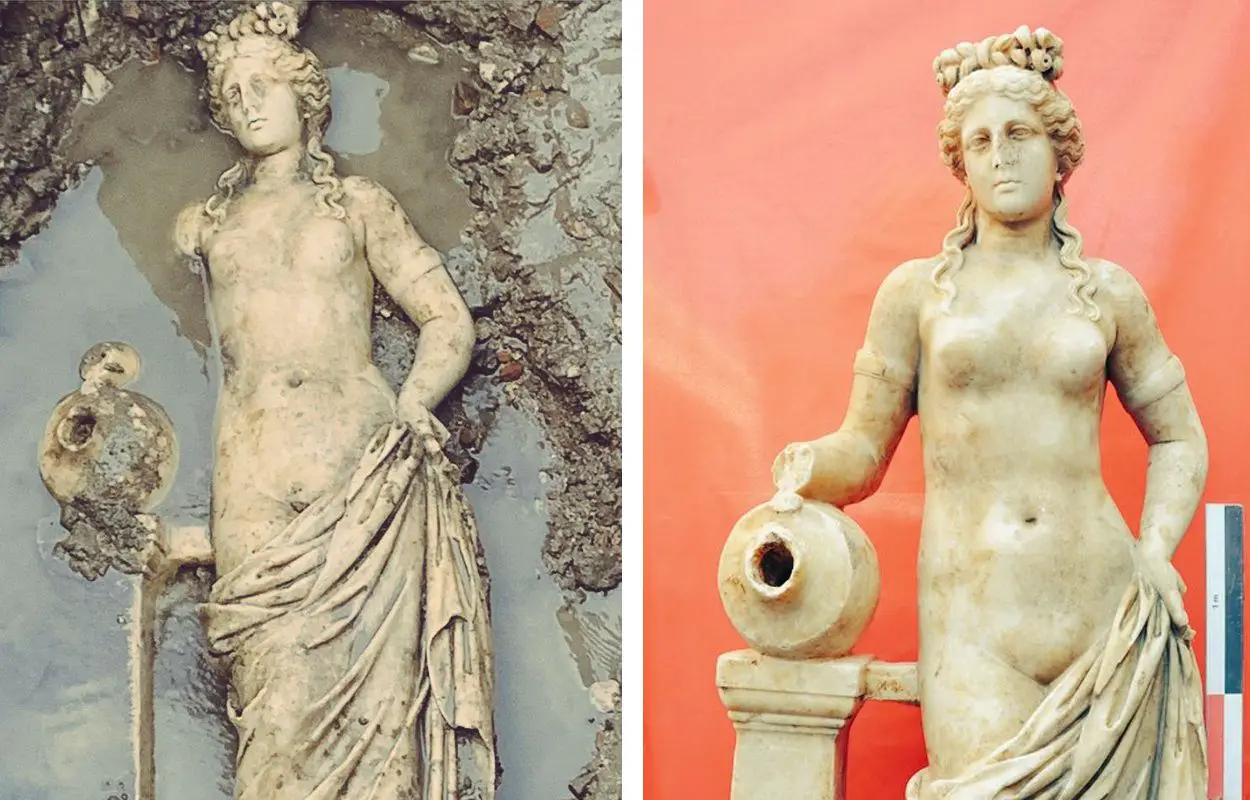According to an announcement by the T.C. Ministry of Culture and Tourism, archaeologists have uncovered an ornate statue during excavations at Amasra, Turkey.
Amasra, originally known as Sesamus, derives its name from Amastris, a Persian princess and Tyrant-ruler of Heraclea. Amasra is first mentioned in Homer’s Iliad, and by Strabo the Greek historian, who places the city on a small river of the same name and occupying a peninsula.
Excavations conducted under the direction of Amasra Museum Director, Zübeyde Kuru, have uncovered a statue from the 2nd century AD during the Roman period.
The statue was found at a depth of 3 metres below ground level and measures approximately 1.5 metres in height. Made from marble, the statue depicts a half-naked female figure wearing a cloak over the lower regions, resting on an urn placed on a plinth.
According to the researchers, the statue likely depicts a nymph from Greek mythology, a minor female deity regarded as a personification of nature.
Nymphs were immortal like other goddesses (except for the Hamadryads) and are categorised into several subgroups, including the Meliae, associated with ash trees; Dryads, connected to oak trees; Naiads, found in freshwater settings; Nereids, inhabiting the seas; and Oreads, dwelling in mountainous regions.
Nymphs are often featured in classic works of art, literature, mythology, and fiction, with the Romans mainly associating them as divinities venerated of the water element.
In a statement on the social account of the Excavations and Research Department of the General Directorate of Cultural Heritage and Museums of the Ministry of Culture and Tourism, Zübeyde Kuru, said: “During our Bartın, Amasra, Gymnasium excavations, a 1.53 metre high statue dating back to the 2nd century AD, thought to be a Nymph, was unearthed.”
Header Image Credit : Directorate of Excavations and Research







